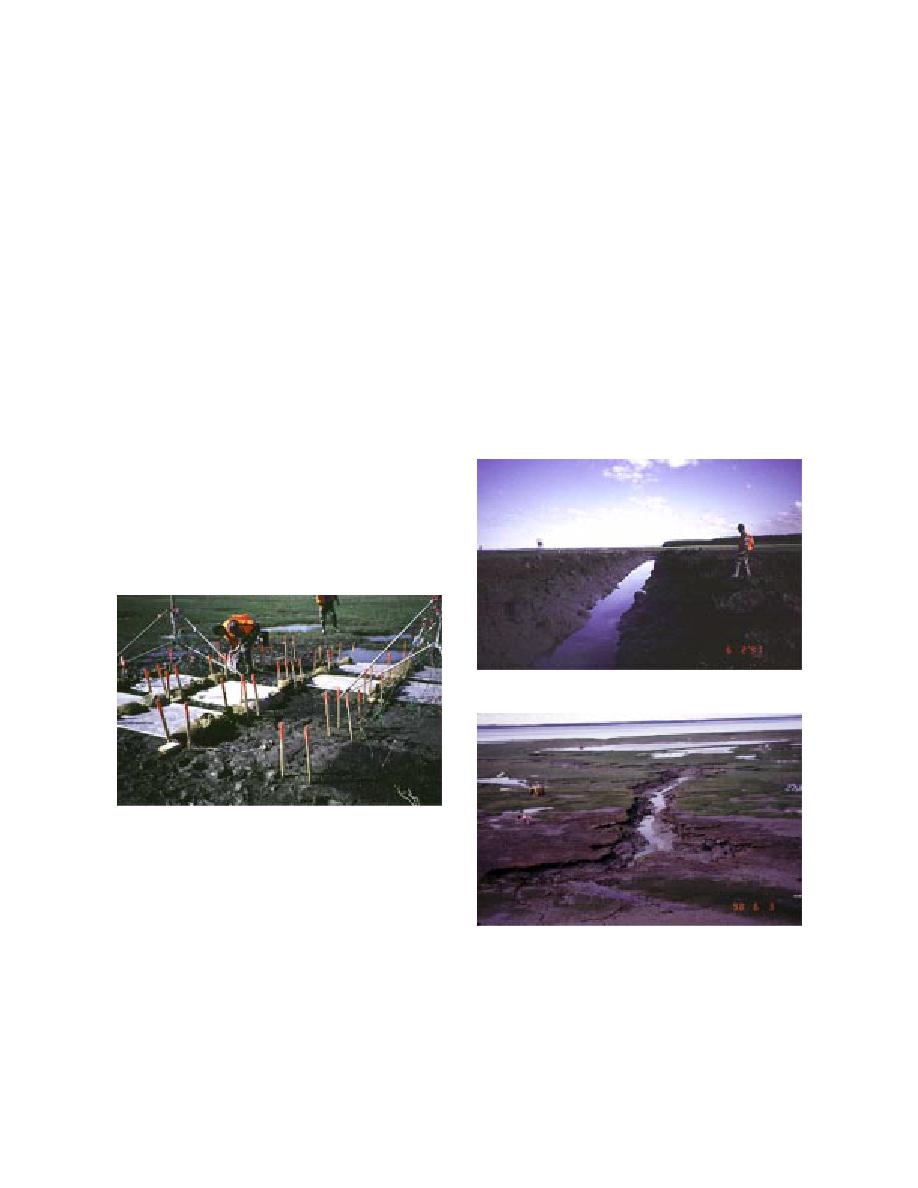
Alteration of habitat to promote
Pond) and Pond 293 (Racine Island). These ponds
in-situ decontamination
were two of the most contaminated ponds in
Chemical alteration of sediments. Both air sparg-
Eagle River Flats. The excavation of ditches to
ing and treatment by hydrogen peroxide were
these ponds, in April 1996 and April 1997 respec-
initially tested in the laboratory. Air sparging had
tively, resulted in the permanent draining of most
little or no effect on white-phosphorus-contami-
of the pond areas (Fig. 6). This removed them as
nated sediment. Hydrogen peroxide was ineffec-
habitat during periods of nonflooding tides,
tive at treating sediment contaminated with
keeping the birds from feeding in the contamin-
white phosphorus particles (Racine et al. 1993b).
ated sediments of the areas drained. Permanent
Both treatment strategies were thus not pursued.
draining has been less successful in the removal
Enhancement of in-situ processes. Enhanced in-
of the white phosphorus through in-situ oxida-
situ natural attenuation of white phosphorus is
tion. Because the drainage ditch connecting the
considered the least-invasive remediation meth-
pond to the nearby tidal gullies has lowered the
odology for areas conducive to this type of treat-
threshold flooding elevation into the pond basin,
ment. Natural attenuation of white phosphorus
the former ponds are subjected to more frequent
contamination through sublimation and oxida-
tidal inundation. This results in more frequent
tion was identified as occurring in intermittent
wetting and slower drying of the sediments and a
ponds in ERF (Walsh and Collins 1995) that
much slower sublimation and oxidation rate of
would lead to the eventual decontamination of
the white phosphorus (Collins et al. 1996, 1997,
these ponds. A treatability study was undertaken
to see if enhancing the natural attenuation pro-
cess was possible through surface warming. Vari-
ous surface modifications and cover treatments
were implemented to change the albedo and
warm the soil (Fig. 5). The results showed soil
moisture to be the controlling factor affecting
a. Racine Island (Meek's Canyon).
Figure 5. Field trials of surface treatments to enhance
in-situ attenuation of WP.
attenuation and that large-scale surface treat-
ments would be difficult and only partially effec-
tive unless the water could be drained out of the
ponds. Although the concept of in-situ natural
b. Bread Truck Pond (Pond 109).
attenuation was ideal, another method of imple-
mentation was required.
Figure 6. Explosively excavated ditches for draining of
ponds.
Pond draining: ditching
Permanent draining of contaminated ponds
1998). The major disturbance to the environment
through explosive excavation of drainage ditches
also contributed to the decision to use this reme-
was successfully done for Pond 109 (Bread Truck
diation method only as a last resort.
7



 Previous Page
Previous Page
